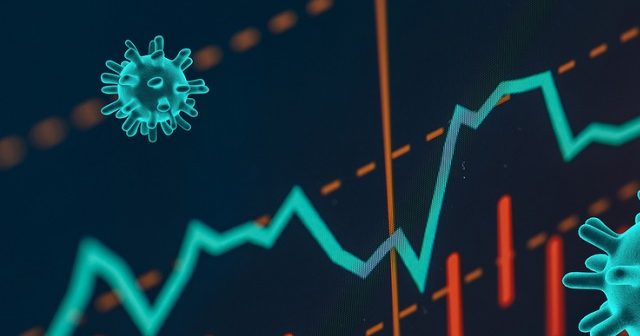
INTRODUCTION
Much of the thinking about countries is predicated on the notion these are defined by national borders. However, in the case of several of the advanced national economies, these display characteristics more in common with transnational entities. This short paper overviews the notion of a Post-Quinary Economy. The paper then looks its strategic thinking, exploring the following concepts: Common Shared Platform, Disparity and Exhaustion (as substitutes for Dominance in strategy), Micro-Actions and Assertion Strategy. The paper looks at the longer-term stresses that COVID-19, and future epidemics, and pandemics will cause for a Post-Quinary Economy.
THE POST-QUINARY ECONOMY
The Post-Quinary Economy is largely an outgrowth of the two topmost economic activities:
Quinary: The quinary economy is focused on creation, re-arrangement, and interpretation of new and existing ideas, data, and technology applications.
Quaternary: The quaternary economy is focused on economic industries associated with knowledge.
The Post-Quinary Economy is based on capital raising, and global finance. Almost all its economic activity is either in government, administration, or education. Provision of medical, hospitality, tourism, and professional services constitute major employers, and providers of services. Defence, security, and policing are also dominant forms of economic activity.
THE POST-QUINARY RESIDENT POPULATION
The Post-Quinary Economy’s resident population is predominantly employed in service provision, and are consumers. With few exceptions, the entire child, and young-adult population are engaged in education. However, a significant portion of the young-adult to pre-retirement age population are long-term unemployed, live in poverty, and are largely supported by state-benefits. The age profile of the Post-Quinary Economy is largely weighted towards older or elderly bands.
The Post-Quinary Economy resident population are multi-national, including citizens, dual-citizens, residents, overstayers, refugees, and short-term visa holders. Post-Quinary Economy residents often have multiple-identities, and overseas connections linked to broader transnational movements of information, people, and capital that define the 21st Century. Post-Quinary Economy residents occupy some of the largest cities in the world, and by 2050 more than a quarter of the world’s population will reside in one of several mega cities.
EMIGRATION
The Post-Quinary Economy is based on emigration. So much so, as a political entity the Post-Quinary Economy is only notionally related to historical national borders. For decades large numbers of its population have gone overseas, forming a diaspora taking with them much of the tertiary sector, and the secondary sector or manufacturing activities, that had been the historical basis of the Post-Quinary Economy. Relocating to trading-partner countries, this is done seeking monopolisation, economies of scale, perceived cost reductions, and a variety of perceived competitive advantages.
Post-Quinary Economies largely retain their primary sector; however, rather than serve local needs, it is mostly dedicated to exporting agricultural products and raw materials to trading-partner countries. Much of these exports feed straight into local firms, that form part of intra-state, and transnational supply-chain linkages. Linkages are administered by transnational economic entities, in the international space between countries. These entities anchor at both-ends in countries, where they import goods for consumption by Post-Quinary Economy resident populations.
SPACE FARING
The Post-Quinary Economy only notionally relates to its historical national borders, and due to its increasing dependency on global informational-digital superstructures, it is rapidly moving beyond the traditional land and sea geography, expanding outwards from national airspace asserting greater control of Low Earth Orbit, and High Earth Orbit space.
By 2050, the Post-Quinary Economy will operate largely from an infrastructure of manned space-based platforms, orbiting the Earth, Moon, and Mars. The Post-Quinary Economy’s ability to fully command global capital, innovation and resources will support expansion in space, looking to extend beyond High Earth Orbit, incorporating Lunar and Mars bases, to access new mineral deposits, increase their influence on Earth, and discover through space exploration advanced technologies, including the use of space vacuum and zero-gravity environments seeking-out advanced space manufacturing of products, for use on Earth.
CONFLICT AND COMMON SHARED PLATFORMS
The Post-Quinary Economy compete with other countries, or rival Post-Quinary Economies. The economic and environmental consequences of the operation of the Post-Quinary Economy produces conflict with trading-partner countries where tertiary sector, and the secondary sector or manufacturing activities are located creating inequity. Inequality is also a key source of conflict within the Post-Quinary Economy due to high-levels of historical unemployment, and disenfranchisement from political, economic, and social power of large sections of the resident population.
The Post-Quinary Economy contend with military and security conflicts pursued by criminal, drug cartels, terrorist, and leaderless extremist, and militia networks: these exist in virtual space, internationally and lodged within Post-Quinary Economy resident populations.
The unique strategic problem faced by the Post-Quinary Economy, is that its competition and conflict occurs over a Common Shared Platform: a shared logistical base spread globally and into space, that is more or less digital (dedicated to operating the internet), and shared in common with potential rivals. Strategic advantage is defined by one side effectively co-opting much of the Common Shared Platform.
DISPARITY AND EXHAUSTION
Defence and security organisations maintained by the Post-Quinary Economy are largely restricted within boundaries set by deep interconnection, and dependency shared between trading-partner countries and transnational economic activity. Confrontations are likely to be transactional and distinct Micro-Actions; notwithstanding that the parent defence and security organisations, represent huge numbers of personnel, operate technologically advanced weapons systems and platforms, and have access to weapons of mass destruction. Nevertheless, only a fraction of these vast organisations are used, as these are reduced to Micro-Actions. Micro-Actions place a greater emphasis on concepts such as Disparity, and Exhaustion, as a substitution for Dominance in strategy.
Disparity: The notion of Disparity, sits at the base of what is traditionally called – Asymmetric Warfare, however it also occupies the conflict space below traditional concepts of Escalation. Disparity exploits differing power relationships. The capacity to dissuade a superior opponent, using low-tech options, such as rock throwing protests is one example of Disparity. Another example of Disparity, is that the superior opponent may have limitations, such as an inability to respond to a Micro-Action, being limited by the disproportionate use of power. If used, causes a political loss of support internationally and locally among Post-Quinary Economy resident populations.
Disparity, can also be expressed in the use of trade embargo, or concealed actor cyber-attacks. These actions appear warlike, but cannot be directly reacted too, as to do so would be disproportionate. A terrorist attack, or a mass-shooting is another form of Disparity. For instance, a civil bombing without warning can cause significant loss of life, destruction of property, social and political chaos. However, the disproportionate violence done during the attack, is often far less than the repercussions when the responsible actors are apprehended.
Exhaustion: Achieving an opponent’s Exhaustion, largely replaces the notion of Dominance in strategy. An opponent is dissuaded from a course of action, as they are subjected to a barrage of Micro-Actions that wear-down their capacity to continue opposition. In other words, the opponent is overwhelmed, worn-down: Exhausted, by a spectrum of attacks – political, bombings, disruption, or economic, over a long-duration time period.
MICRO-ACTIONS
Post-Quinary Economy conflicts take place in sprawling cities along coastal regions. These are dense built environments, massively over-populated, and largely mixed resident populations representing many countries. Micro-Actions are constrained by a plethora of political, social, medical, humanitarian, environmental, economic, and technological factors.
Micro-Actions are guided by proportionate response. This ensures minimum disruption to the ongoing operation of economic, human, power, and information activities that network throughout the rest of the mass urban agglomeration – that may have crucial linkages into information, supply-chains, economic, and human systems, if disrupted, damaged, or destroyed have world-wide implications.
The Post-Quinary Economy support massive diaspora populations in trading-partner countries, as well its own multi-representative resident population. Rivals can mobilise their citizens into political action, and representation – that directly interface with Post-Quinary Economy governments, and political institutions, as well as resident population’s political thinking, direction, and public-opinions.
Micro-Actions are also strategically effected by immersion in the 24/7 info sphere generated by constant coverage from blogging and phones. Reported news, fake-news, and conflicting facts risk drowning-out a coherent understanding as to the meaning, success, or failure of what the action was supposed to achieve. The dynamic is also bracketed by the input of third party players: the UN, traditional allies, economic and vested business interests, medical, humanitarian, and environmental activists.
ASSERTION STRATEGY
An Assertion Strategy poses significant strategic problems for the Post-Quinary Economy. A rival pursues Assertion of its border, immigration, and taxation (such as tariff) rights as a strategy to overcome perceived inequity in its relationship with a Post-Quinary Economy. Fundamentally dependent on its linkages with its diaspora managing overseas economic functions: tertiary, and secondary (manufacturing activities), needed to support a Post-Quinary Economy. Assertion of national space, immigration, and border control by trading-partner countries, can sever supply-chains, and impinge on the transnational movements of information, people, and capital. An Assertion Strategy can arise in relation to epidemic and pandemic responses.
EPIDEMIC AND PANDEMIC RESPONSES
Epidemic and pandemic responses are a source of major strategic instability for the Post-Quinary Economy. For instance, the COVID-19 pandemic response, since March-April 2020, has weakened the emerging Post-Quinary Economies, such as the U.S., European Union, and China. The most notable effect was the economic, political, and social costs caused, as fall-out from attempts to contain and mitigate the spread of the virus. National governments initiated full-stops to their domestic economies, and closed their borders – all of which, fundamentally disrupted transnational supply-chain linkages, the import of goods for consumption, and transnational movements of information, people, and capital.
FUTURE TRENDS
An epidemic, or pandemic can be seized-upon by totalitarian governments, and extremist non-state actors as a strategic opportunity seeking to weaponize virus transmission achieving greater levels of control, attack perceived enemies and supplant legitimate state power. It is anticipated that, world-wide ongoing transmission of epidemic, and pandemic viruses, like COVID-19, will become embedded into the strategic factors underpinning nearly all of the current, and future world conflicts. A new form of conflict strategy will emerge, as opponents will seek to degrade or destroy capacity to contain, mitigate and medically treat virus cases, at the same time they seek to monopolise their capabilities to fight virus transmissions, as the means to exhaust an opponent, overwhelm and defeat them.
- Flaherty, C. 2018 Deception as a Pervasive and Elemental Force. Small Wars Journal.
- Flaherty, C. 2015 The Role of CCTV in Terrorist TTPs: Camera System Avoidance and Targeting. Small Wars Journal.
AUTHOR
Chris Flaherty authored the Terrorism Research Center’s report ‘Dangerous Minds’ (2012). He was the co-primary author, along with Robert J. Bunker of the book ‘Body Cavity Bombers: The New Martyrs’ (iUniverse, 2013). Two essays of his, from 2003 and 2010 were reprinted in the Terrorism Research Center’s book ‘Fifth Dimensional Operations’ (iUniverse, 2014). He recently contributed a book chapter ‘The Role of CCTV in Terrorist TTPs’, edited by Dave Dilegge, Robert J. Bunker, John P. Sullivan, and Alma Keshavarz, the book ‘Blood and Concrete: 21st Century Conflict in Urban Centers and Megacities’, a Small Wars Journal anthology, published on behalf of the Small Wars Foundation with Xlibris (2019).
Dr Chris Flaherty https://au.linkedin.com/in/drchrisflaherty





